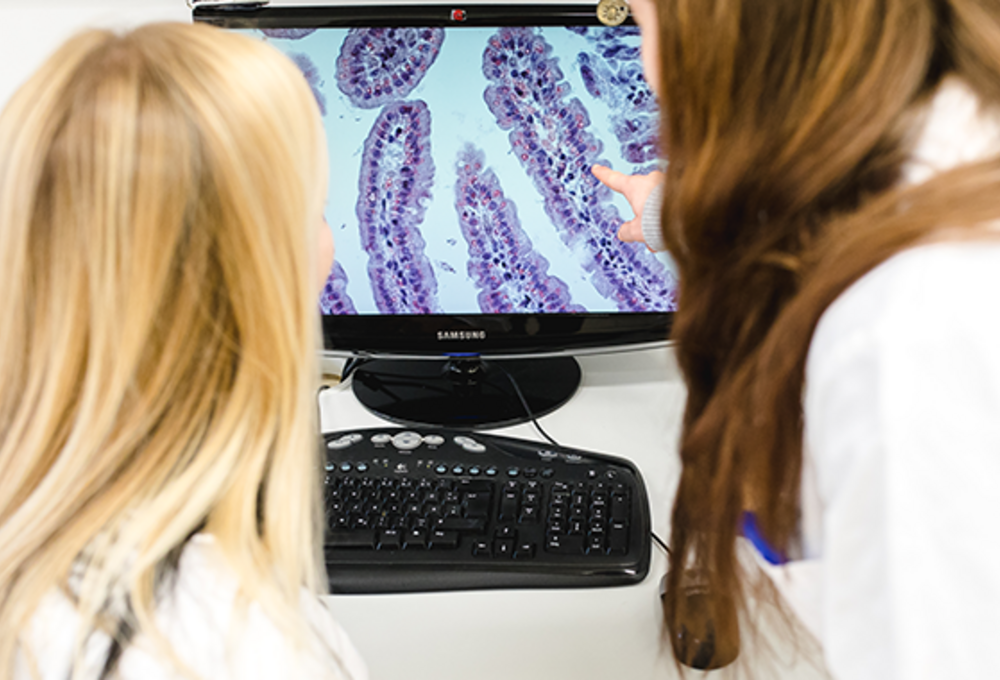-
The University
- Welcome
- Who we are
- Media & PR
- Studying
-
Research
- Profile
- Infrastructure
- Cooperations
- Services
-
Career
- Med Uni Graz as an Employer
- Educational Opportunities
- Work Environment
- Job openings
-
Diagnostics
- Patients
- Referring physicians
-
Health Topics
- Health Infrastructure
SFB Organization & Teams
Eight established research teams at four Austrian universities are studying lipid hydrolases, which are key enzymes for cell growth and proliferation, cellular signal transduction, and energy metabolism. Therefore, dysfunctions of these lipid hydrolases are often causes of many metabolic diseases. In the second funding period, the lipid hydrolases newly discovered in the first funding period will be characterized in detail. In the second funding period, the lipid hydrolases newly discovered in the first funding period will be characterized in detail. The better we understand the complex reaction processes of fat degradation, the easier it will be to decipher the causes of metabolic diseases and to find new treatment strategies. All research teams involved in the SFB have full access to six technology platforms to understand the structure, function and physiological relevance of lipid hydrolases. In this way, the SFB Lipid Hydrolysis aims to contribute to the elucidation of disease mechanisms and the development of new, innovative treatment strategies.

Technology Platforms
Lipid hydrolase screening
A central goal of the SFB LIPID HYDROLYSIS is to establish a clone and enzyme collection for all predicted serine hydrolases. Recombinant proteins are expressed in suitable mammalian expression systems and subjected to functional screening.
Mouse models
For almost all project parts of the SFB LIPID HYDROLYSIS consortium, both the use of existing transgenic and knockout mouse lines and the generation of novel mouse models are essential.
Morphology and pathology
Morphological, histological, immunohistochemical, and ultrastructural examinations of various murine tissues and organs are indispensable to assess the (patho)physiological consequences of loss of lipid hydrolases.
Omics
Essentially all project parts of the SFB LIPID HYDROLYSIS require the qualitative identification and quantitative analysis of lipid species. In addition, many project parts rely on the analysis of metabolites and proteins including their modifications. The Omics platform builds on the existing infrastructure and expertise for lipid, protein, and metabolite analyses in Graz and Vienna.
Microscopy
Team members of the SFB LIPID HYDROLYSIS have access to cutting-edge optical imaging technologies enabling specialized applications not addressable using standard light and fluorescence microscopy.
Data Management
Best practices for research data management are used to ensure robust results and reproducible science. Med Uni Graz provides storage and server capacities. All SFB Lipid Hydrolysis researchers have access to the platform to store, share, and analyze their data according to FAIR data integrity principles (findable, accessible, interoperable, reusable).

Scientific Advisory Board
The role of the SAB is to evaluate and advise the SFB LIPID HYDROLYSIS on overall strategy and general progress. Whenever possible, especially in the Covid-19 pandemic, members of the SAB join our annual retreats to discuss the quality and relevance of our research, provide valuable advice on new technologies, and help by deciding future goals and aims. Smaller discussion groups of individual project leaders and team members with the SAB discuss more specific issues related to the particular research questions and results.
Our SAB members are
- Dominique Langin (Obesity Research Laboratory, CHU Rangueil, Toulouse, France)
- Tobias Walther (Memorial Sloan Kettering Cancer Center, New York, NY, USA)
- Erin Kershaw (Division of Endocrinology and Metabolism, University of Pittsburgh, PA, USA)



